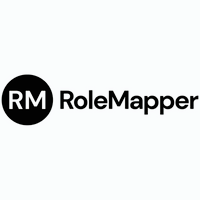How to create a sustainable job architecture
When it comes to operationalising job architecture - mapping roles, defining levels and creating a structure to support pay, progression and performance - for some companies, it’s a response to years of ad hoc role creation. For others, it reflects a wider shift towards skills-based planning and agile ways of working.
What begins as a well-scoped initiative can prove difficult to maintain. That’s not necessarily a reflection of poor planning, but rather a sign that implementing a job architecture is an operational challenge. If the goal is to embed fairness, flexibility and clarity across the organisation, the structure needs to live well beyond the project.
Designing is only the start. Keeping it alive is the work
Most internal projects start with mapping job families, creating templates and drafting role profiles. Progress feels quick in the early phases, but then a new role needs adding, a team restructures, or a hiring manager makes a request that doesn’t fit the template.
Without a straightforward approach to updates, consistency begins to drift. Titles multiply, role profiles land in different folders or formats, and teams start editing their own versions. This is where many frameworks lose traction. The core issue isn’t the initial design; it’s the lack of a model to evolve and scale that design over time.
For a job architecture to deliver long-term value, it must have clearly defined ownership, structured processes for adding or evolving roles and an embedded model for ongoing maintenance.
Without this, even the best frameworks risk fragmentation. Governance must be explicit from the start, with:
- Clear role ownership across teams
- Standardised processes for creation, updates and approvals
- Transparency and traceability of changes
- One central source of truth for job content
Done right, governance transforms job architecture from a static framework into a living system that scales with the organisation, supporting fairness, agility and consistency at every stage.
Some organisations build this internally. Others bring in platforms or partners that make governance easier by embedding it directly into content creation and workflows.
Job content needs structure, not just description
One common focus area is updating job descriptions: making them clearer, more inclusive or more aligned with company values. That’s a useful starting point, but it won’t deliver the outcomes needed on its own.
To create a job architecture that supports reward, mobility and skills planning, roles need to have responsibilities consistently linked to levels and skills to ensure role content is comparable across functions.
A sound principle here is to design for the parent, not the child. Create job profiles that work across teams. You’re not just writing for one team; you’re defining a common structure that should hold true across the business. For example, a core profile for “Analyst” needs to reflect what’s true of all analyst roles; whether that’s an HR analyst, a sales analyst or a finance analyst.
Once you’ve defined the parent, it can then flex into function-specific versions, which include tailored accountabilities and skills but always remain anchored to the core profile. This maintains levelling integrity and compensation alignment, even as business areas localise the content. A third version, often the job ad or requisition, can be styled for external use, while still tracing back to the parent structure.
This distinction simplifies decision-making, supports career transparency and creates the consistency needed for operational use across HR, managers and systems.
Spreadsheets can’t operationalise your job architecture
It’s common for internal projects to run on Excel, Word or PowerPoint. These tools are familiar, fast and flexible during the early build stages. As role libraries grow, however, they become harder to manage.
Disconnected documents make it difficult to keep track of changes, to see who owns what and ensure the business is using the most up-to-date version. Version control breaks down, manual updates absorb more time and integration into HRIS, hiring tools, or comp frameworks becomes increasingly complex.
This is often the point at which internal teams start looking for support. Not because their content is wrong, but because the operating model for their job architecture needs to scale. This calls for platforms, process design and content logic that can flex with the organisation.
What happens after go-live matters most
Think ahead to how your job architecture and your job profiles will support hiring, pay decisions, promotions and mobility. How will managers easily access profiles? How will roles be kept consistent with the levelling used for compensation and internal progression? Will the structure integrate with future skills strategies?
If those questions aren’t considered early, the risk is that the framework never embeds into day-to-day decisions.
Final thoughts
Building a job architecture internally makes sense. It can give you control, context and credibility with the business. But success doesn’t stop with the build. To embed it, you’ll need structure, governance and a plan for how it will scale.
For some, that means upgrading internal tools. For others, it means partnering with a provider who can support long-term delivery and maintenance, turning what was once a static project into a dynamic part of how the organisation grows and operates.
If your architecture project is already underway, or you’re planning your next phase, now’s the time to think beyond the build and focus on how you’ll keep it working.
Supplied by REBA Associate Member, RoleMapper
RoleMapper is an AI-powered job data transformation and management platform.








